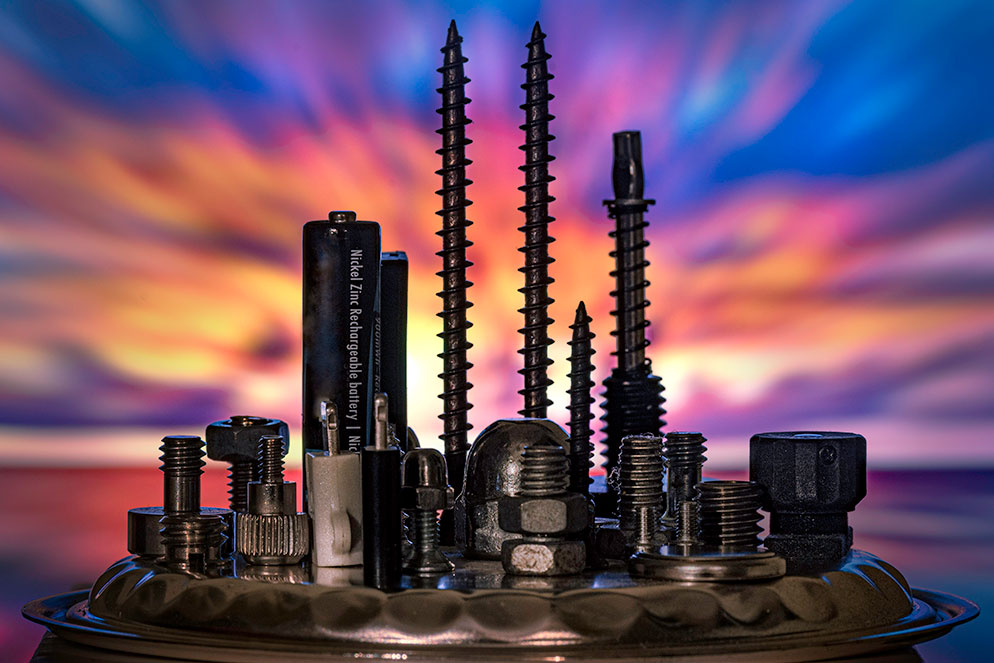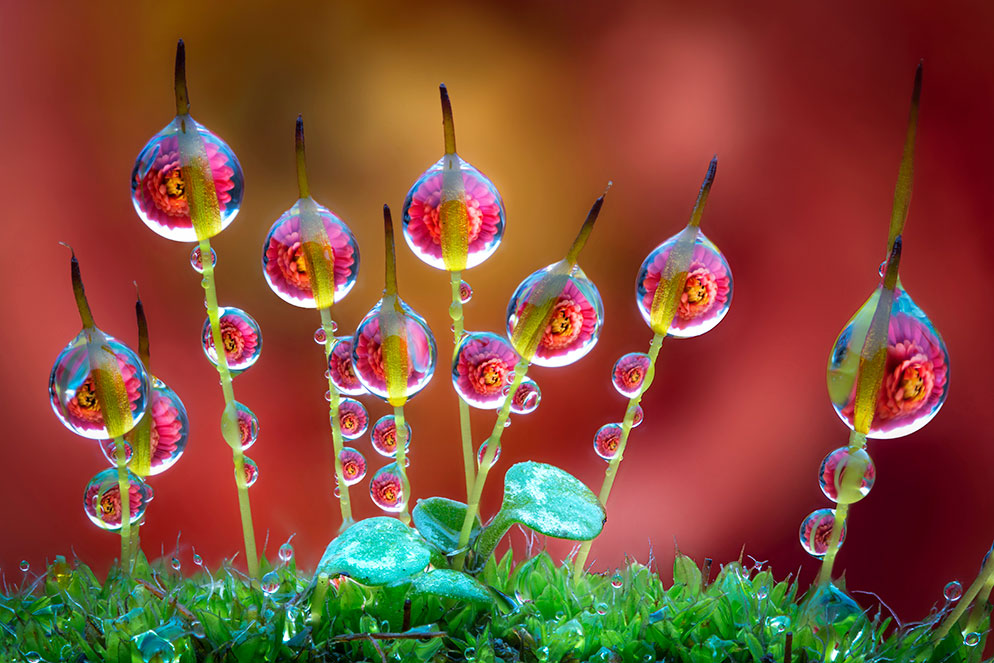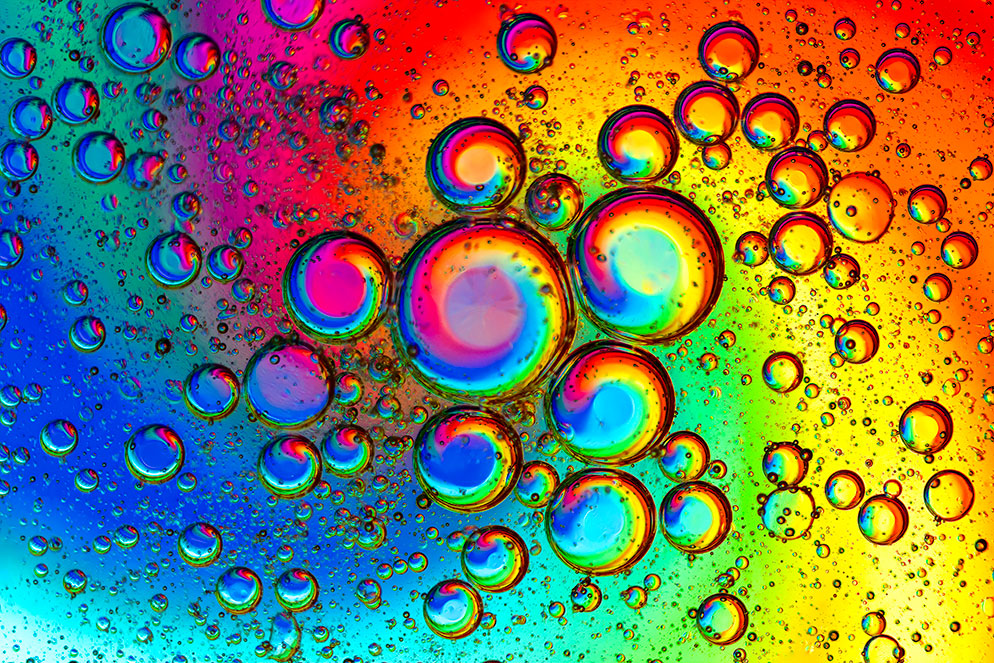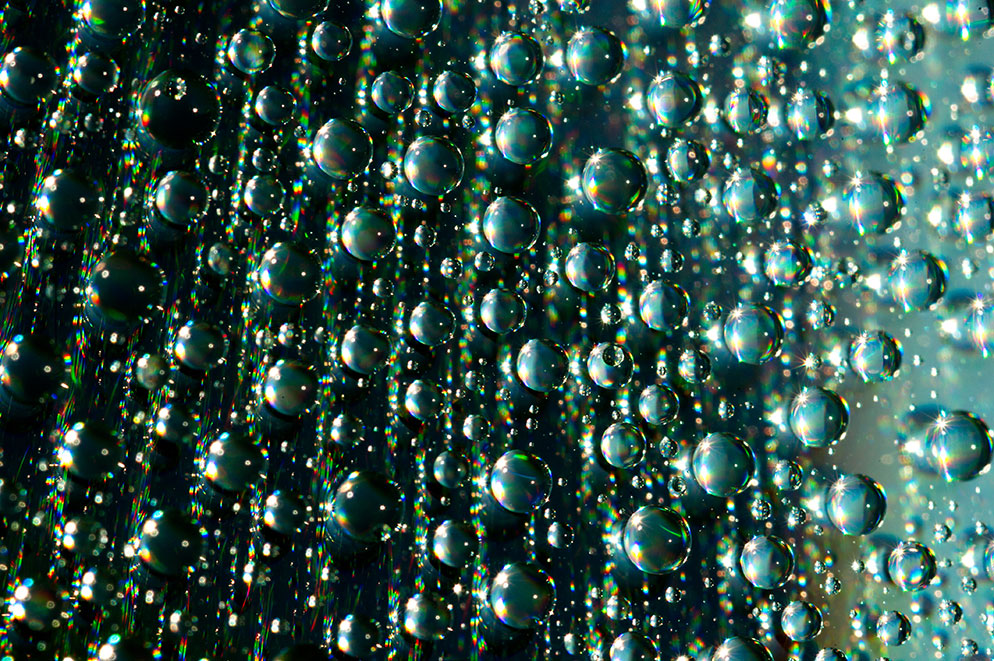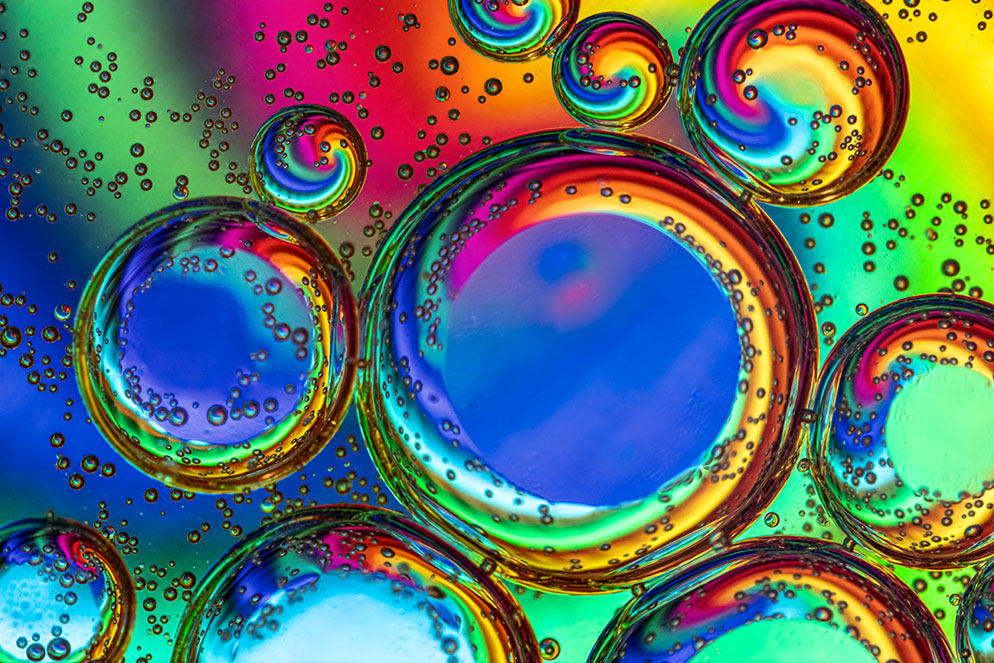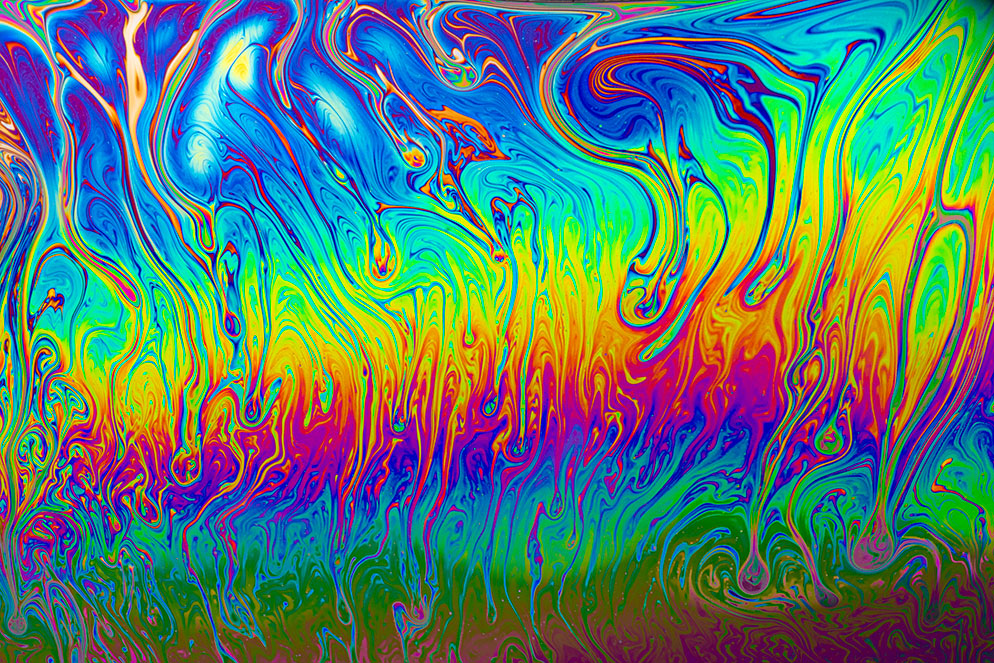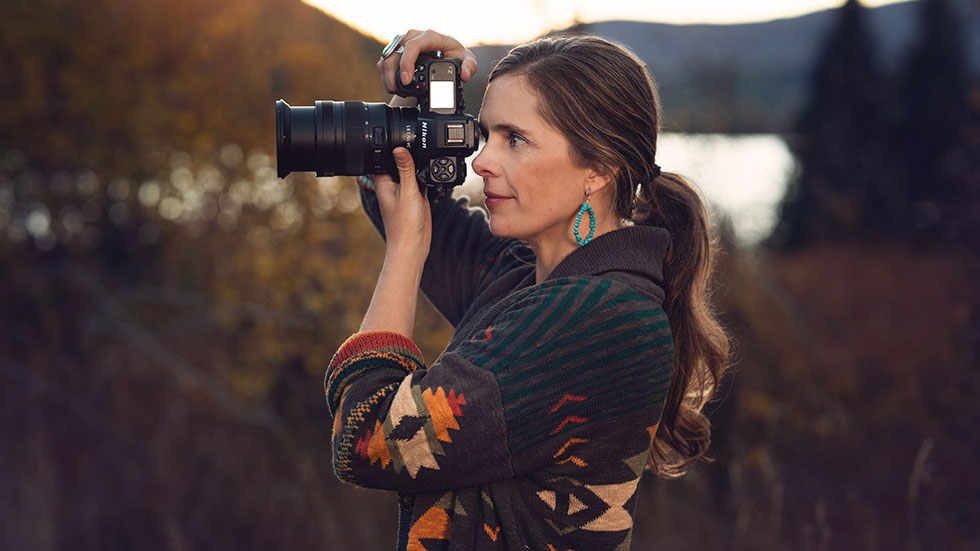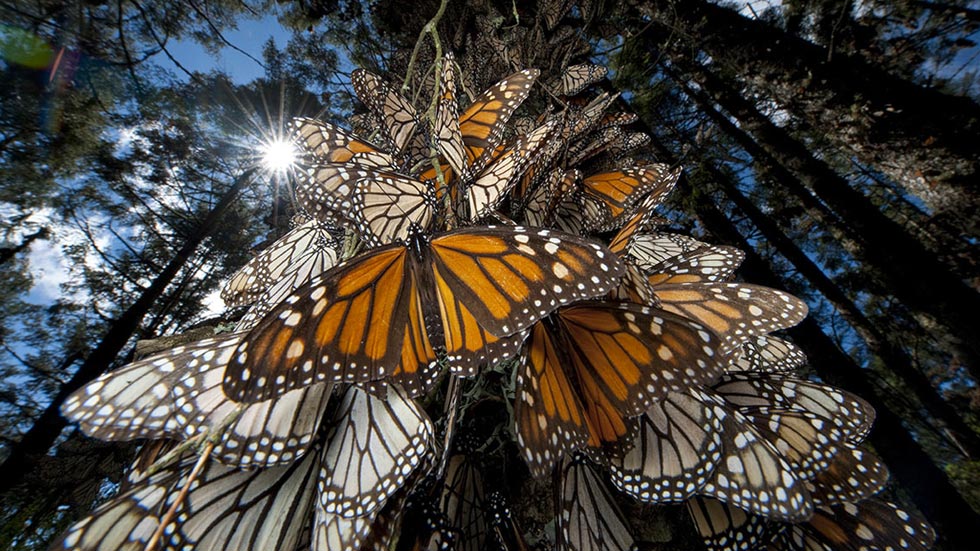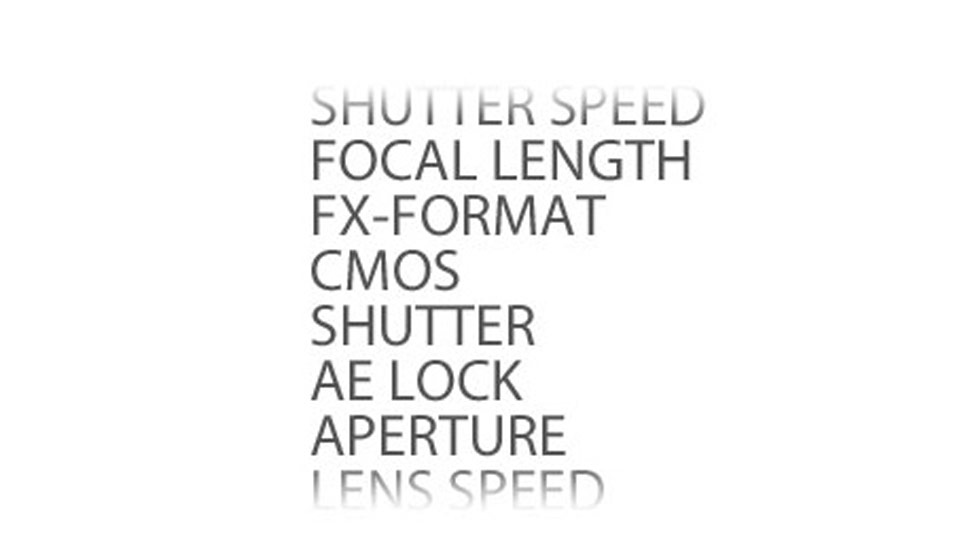In Focus: Experimenting with Macro Photography at Home
Moss sprouts with peacock feather background. Nikon D800E, AF Micro-NIKKOR 60mm f/2.8D, f/16, 4 seconds, ISO 200.
Macro photography—a lifelong love
Macro photography is one of the most fun photographic techniques. It enables us to explore worlds often invisible to us and clearly observe the small details that exist in everyday life which the naked eye cannot. Macro photography has fascinated me for a lifetime.
Getting started
The beauty of this technique is that a good compact or bridge camera might be all you need to get started. Just check to see if it has a macro function and then confirm the correct distance with which to shoot to get the maximum magnification. If you own a Z series mirrorless or DSLR, whether full-frame or crop-sensor (DX), everything will depend on the lens. Don’t be discouraged if you don’t own a macro lens, different lenses are also capable of good reproduction ratios. I often use optics like the AF-S DX NIKKOR 18-300mm f/3.5-5.6G ED VR to take good macro photographs.
Droplet in glitter. D3S, AF Micro-NIKKOR 200mm f/4D IF-ED, f/8, 1/250 of a second, ISO 200.
Understanding maximum magnification
To get the maximum magnification you can obtain with your lenses, I recommend focusing in manual mode. Then move the focusing ring to the minimum allowed distance and the longest focal length if using a zoom lens. At this point, looking through the viewfinder, you approach or move away from any subject to see it clearly in focus. When you see the right distance through the viewfinder (or even when using Live View) this will be the maximum reproduction ratio you can obtain with your lens.
For example, with the aforementioned AF-S DX NIKKOR 18-300mm f/3.5-5.6G ED VR, I will be able to stay at 0.45 meters from my subject with a focal length of 300mm to obtain a reproduction ratios of 1:3 or 0.32X. This is often more than enough to capture good macro photographs. Alternatively, if you have an FX body you can use it in DX mode for the same results as you would have with a DX camera, at the expense of a megapixel reduction. But of course if you have a true macro lens, you should use it to obtain a reproduction ratios of 1:1 or life-size, where our subject will occupy the same surface on the sensor that it occupies in reality.
Shapes of oil and water. Z 7, AF-S VR Micro-Nikkor 105mm f/2.8G IF-ED with Mount Adapter FTZ, 1/3 of a second, f/7.1, ISO 64.
Yes, it’s technical—but don’t be afraid to have fun
For macro photography to be executed well, you generally need a good level of technical knowledge—but don’t let this put you off. Now is the perfect time to give it a try, experiment and have fun!
Here are some scenarios you can try at home:
Capturing droplets on a CD
I used a CD, but a DVD can also work well, with a nebulizer and a syringe to create droplets on its surface. To make it easier for myself, I secured the CD to the tripod with a clamp. To recreate my shot, the most important thing is to find the correct angle to create the rainbow effect. This can easily be achieved next to a window, rotating the disk or using an LED lamp, until the colors are at maximum intensity. Each time you spray the disk, different drops will form. If you particularly want to create round droplets then I recommend using a dry CD.
Droplets on a CD. D3S, AF-S Micro-NIKKOR 60mm f/2.8G ED, f/22, 1/160 of a second, ISO 200.
Everyday household objects can be deceiving
Wandering around the house I found objects such as screws and nails that could be interesting as macro subjects. While photographing them I asked myself what it would be like to capture them all together, which is when I came up with the idea of creating miniature cities that deceives the observer at first glance.
Using a silver saucer as a base, I placed various screws and objects together to recreate a small imaginary city. Once the city was created—admittedly, this took several attempts because I kept hitting everything with my arm—it was all about good lighting.
To make the background more pleasant, which can be difficult at home, I used my laptop with a photo projected on the screen—a beautiful sunset.
After some experimentation, I tried to remove as much light as possible for a near silhouette of the tiny structures projected against the background to create a realistic effect.
Miniature city made out of nails, bolts and nuts. Z 7, AF- S Micro-NIKKOR 60mm f/2.8G ED with Mount Adapter FTA, f/16, 1/8 of a second, ISO 64.
What else can you capture at home?
Another easy-to-photograph subject to create abstract and colorful images are the shapes that occur when mixing oil and water. All you need is a transparent baking dish or simply a glass—which is what I used. My advice is to fill the glass, but not to the brim. Add a few drops of oil, mix with a teaspoon and you'll see bubbles of different sizes eventually form. You can then add colored backgrounds under the glass—I used a sheet with different shades. A magazine with colored pages can also work well. Now to add light to our mix. I prefer to use an LED flashlight to rotate around the glass to emphasize shapes and colors—the best effects are obtained with it placed on the side. You can also use an external flash to freeze the liquid or use very fast shutter speeds.
Shapes of oil and water in a glass. Z7, AF-NIKKOR 50mm f/1.8D and extension tubes with Mount Adapter FTZ.
The possibilities are endless…
If you have time, the possibilities for abstract macros are endless. If you have a garden or a balcony with plants, you can photograph dry leaves, trying to capture the most interesting details. You can take it one step further and put the leaves in an oven dish and freeze them. Another of my favorite subjects is moss with its many buds. You can detach a piece of it, bring it into the house and, using your imagination, adorn it with drops and colored backgrounds.
So what are you waiting for? Take your camera and immerse yourself in the world of macro photography and above all find your own style by creating your own light!
Using a CD or DVD, oil mixed with water and you can create unique macro abstract art. D850, AF Micro-NIKKOR 60mm f/2.8D, 1/320 second, f/32, ISO 64.

